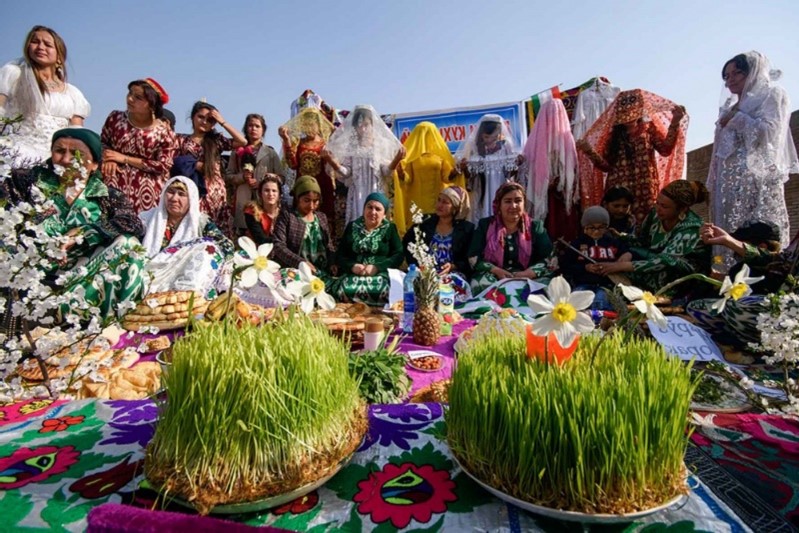CELEBRATION OF NAVRUZ HOLIDAY
March 14th, 2023 year at the department of propaedeutics of children's diseases of SEI “Avicenna Tajik State Medical University” there was conducted an open lesson on the topic: "Celebration of Navruz holiday". The presentation was carried out by the students of the curatorial group under the guidance of the assistant department Kasymova P. V. with the participation of the staff of the department and students of the 4th group of the 3rd year of pediatrics faculty.
The word "Navruz" means "New Day" (from "nav" - new and "ruz" - day). This is the name of the festival of spring, the first day of the new year, the day of the vernal equinox, the most famous and widespread holiday of the Persians - Iranians, Tajiks and Afghans. The main days of the holiday are March 21 and 22. In each country and in different regions people may celebrate the day differently, but in Tajikistan, mostly Navruz is celebrated from March 21 to 24. The oldest source, which specifies the celebration of Navruz is the sacred book of Zoroastrianism “Avesta”. The roots of the holiday go far back in history, up to 3000 years B.C. The origin of Navruz, as stated in Omar Khayyam's "Nowruznoma" ("Book of Navruz"), goes back to the time of Peshdodien, one of the oldest kingdoms in the world and history of the Persians. In the "Shahnama," the origin of the holiday is linked to the legendary King Jamshed. As you know, March 21 is the day of the vernal equinox, and the length of day and night is the same - 12 hours. When Jamshed built himself a throne of pure gold (according to legend, it was the first throne in human history) and raised it on the highest mountain at sunrise, the gold glittered in the sunlight and began to shine like the sun. This day was called Nowruz and began to be celebrated as the beginning of the new year.
"Navruznama" says that: “When Jamshed comprehended this day, he called it Navruz and made it a customary holiday. Kings and other people followed him”. On the days of the celebration of Navruz, various events are organized. In the spirit of folk traditions there are horse races, goat-racing (buzkhkashi), wrestling of strongmen, “buchulbo”, “argamchinbozi” (jumping), “lankabozi”, hitting with eggs “tukhmzanak” and “idgardak”.
Great attention is paid to the preparation of the holiday table. On the holiday table try not to put a dish of meat and other products taken from animals, except milk. The symbol of Nowruz and the new year is “sumalak”. How is sumanak prepared? About a week before the holiday in a bowl with a shallow bottom (it can be a plate) soaked wheat grains. By the holiday, the wheat grains are sprouted. It is believed that the longer the sprouts of sprouted grains, the bigger and better will be the harvest of the new year. Sprouted grains are pounded in a metal mortar, put in a cauldron, pour water, add flour and boil for 10-12 hours, stirring all the time. It is very sweet, although no sugar is added.
Sumanak should be ready before sunrise on the main day of the holiday. During the preparation of sumanak, women and children sing festive songs and recite poems. Sumanak is not a simple dish, it is something sacred. That is why before making it the leading cook recites a surah from the Koran, namely "Ikhlos". Sumanak is distributed to all neighbors, relatives, relatives and friends. Before trying it, one has to make three wishes, they can be fulfilled within a year.
Department of propaedeutics of children's diseases
translated
Ruzimuhammad Ismoilov

